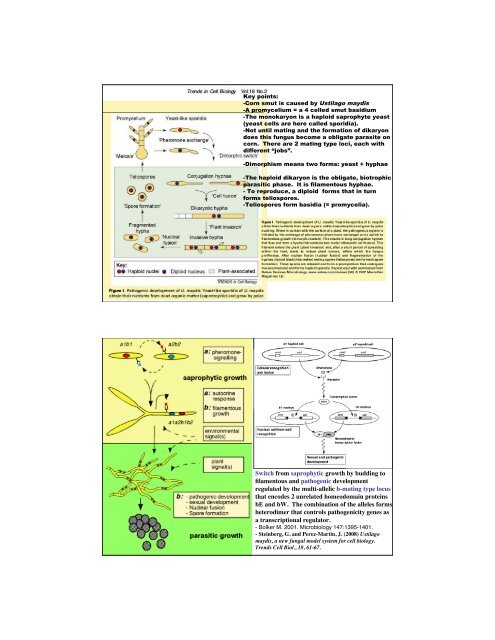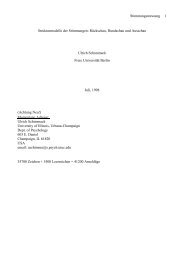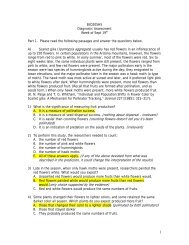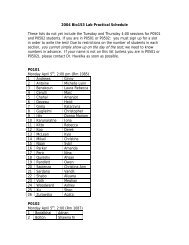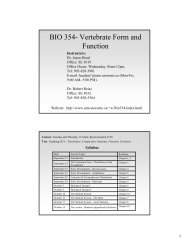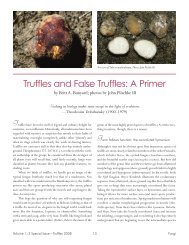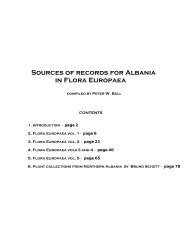KINGDOM EUMYCOTA Phylum 3 - DIKARYOMYCOTA Subphylum ...
KINGDOM EUMYCOTA Phylum 3 - DIKARYOMYCOTA Subphylum ...
KINGDOM EUMYCOTA Phylum 3 - DIKARYOMYCOTA Subphylum ...
Create successful ePaper yourself
Turn your PDF publications into a flip-book with our unique Google optimized e-Paper software.
Key points:<br />
-Corn smut is caused by Ustilago maydis<br />
-A promycelium = a 4 celled smut basidium<br />
-The monokaryon is a haploid saprophyte yeast<br />
(yeast cells are here called sporidia).<br />
-Not until mating and the formation of dikaryon<br />
does this fungus become a obligate parasite on<br />
corn. There are 2 mating type loci, each with<br />
different “jobs”.<br />
-Dimorphism means two forms: yeast + hyphae<br />
-The haploid dikaryon is the obligate, biotrophic<br />
parasitic phase. It is filamentous hyphae.<br />
- To reproduce, a diploid forms that in turn<br />
forms teliospores.<br />
-Teliospores form basidia (= promycelia).<br />
Switch from saprophytic growth by budding to<br />
filamentous and pathogenic development<br />
regulated by the multi-allelic b-mating type locus<br />
that encodes 2 unrelated homeodomain proteins<br />
bE and bW. The combination of the alleles forms<br />
heterodimer that controls pathogenicity genes as<br />
a transcriptional regulator.<br />
- Bolker M. 2001. Microbiology 147:1395-1401.<br />
- Steinberg, G. and Perez-Martin, J. (2008) Ustilago<br />
maydis, a new fungal model system for cell biology.<br />
Trends Cell Biol., 18, 61-67.


